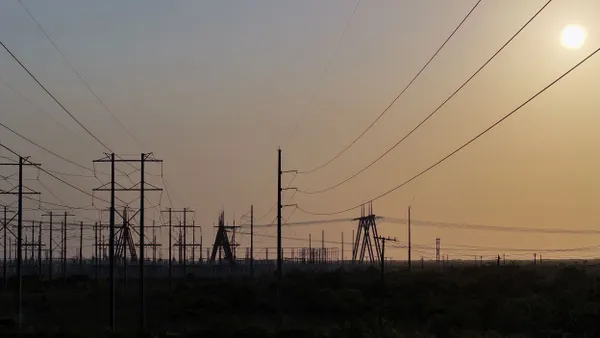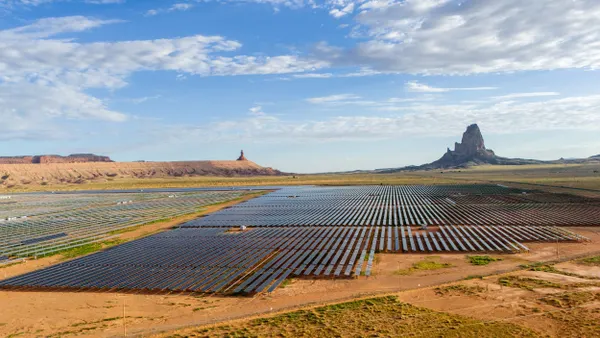Dive Brief:
- Gas generation is forecasted to outpace coal for the first full year in 2016, and EIA notes many of those plants are being developed near the nation's shale reserves to take advantage of proximity to the fossil fuel.
- According to the U.S. Energy Information Administration, growth in natural gas-fired generation capacity is expected to continue over the next several years, as 18.7 GW of new capacity comes online between 2016 and 2018. Florida is expected to lead the nation, with 3.8 GW of new capacity in that timeframe.
- Behind Florida, EIA said the Mid-Atlantic states and Texas have the most gas-fired capacity additions coming online through 2018, with many capacity additions concentrated around the Marcellus and Utica shale regions.
Dive Insight:
The impact of plentiful, cheap shale gas will continue for the next few years, officials at EIA said this week, with new plants cropping up around supply centers and increasing pipeline capacity helping move supply to constrained areas. EIA said natural gas-fired power generation increased 19% in 2015, and the agency expects gas to be the dominant generation fuel in the United States this year.
In the Mid-Atlantic states, EIA said gas capacity additions are concentrated around the Marcellus and Utica shale regions, largely located in Pennsylvania, West Virginia, and Ohio — areas where gas production has been growing for years now, aided by the shale boom and cheap supply.
In that region, Virginia accounts for the largest cumulative additions of gas-fired capacity expected over the 2016–2018 timeframe, with 2.3 GW of gas-fired capacity under construction. Ohio is next, with 1.9 G; Pennsylvania with 1.8 GW; and Massachusetts has 700 MW under construction, according to EIA's Electric Power Monthly.
"EIA's May 2016 Short-Term Energy Outlook forecasts that this year, natural gas-fired generation will exceed coal generation in the United States on an annual basis," the agency said.
In Texas, there are "significant levels of natural gas-fired capacity are under construction," with 3.2 GW expected to become operational over by 2018. The state produces more natural gas than any other state, laying claim to the Eagle Ford and Barnett shales.
The one outlier to the shale supply trend is Florida. Though the state has no natural gas production, it expects 3.8 GW of natural gas capacity to be added between now and 2018 — all from just three new plants.
"Although the state has no shale gas production, the retirement of older, less-efficient coal units and the replacement of some oil-fired capacity have led to the expansion of regional pipeline networks to bring more shale gas to serve gas-fired generation," EIA said.
Reliance on the resource led Florida Power & Light to seek and recieve approval from regulators in 2014 to invest directly in Oklahoma natural gas production. That decision was thrown out by the state Supreme Court this week, which ruled regulators exceeded their authority in granting cost recovery for drilling activities.













